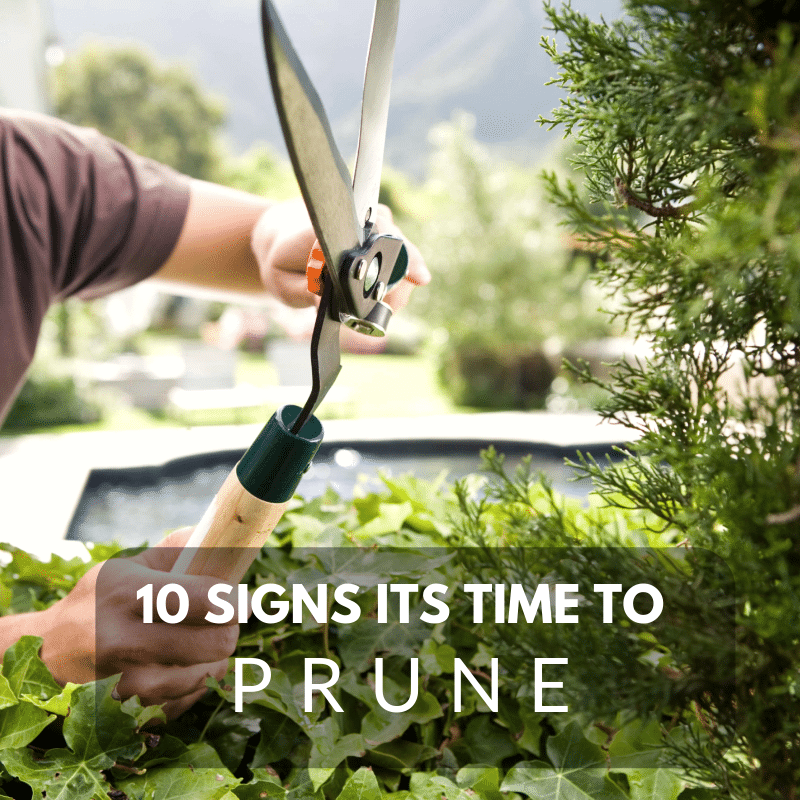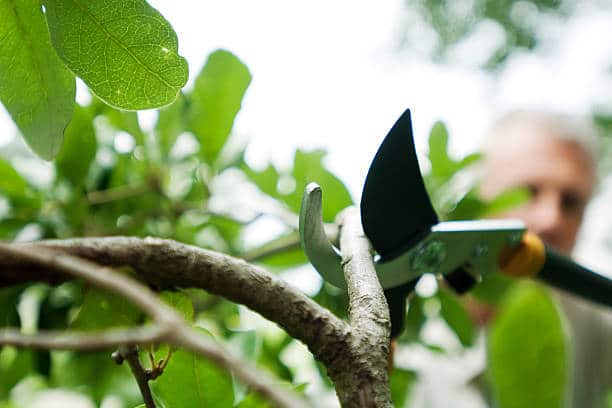Here’s All You Need to Know About When to Prune Trees
The growing season is a stunning time of the year, but this beauty is often dependent on whether the gardener knows when to prune trees and shrubs. There’s much to consider when it comes to pruning trees, including whether to remove dead branches, how to deliver the proper pruning cuts, and whether leaving a stub is necessary. You also need to consider whether mature trees or large branches need tree trimming or more time to take advantage of the coming spring growth.
Knowing when to prune trees is also essential, as even large trees can be delicate. Pruning your tree branches in the wrong season or missing diseased branches, like Oak wilt, could severely hinder growth. If it’s a fruit tree, it may not produce up to its full potential without the proper care.
Read on for Lineage Tree Care’s expert tips for when to prune trees and to ensure proper growth for next season’s fruit, flowers, and shrubs.
When is the Best Time to Prune Trees?
Most budding gardeners and landscapers believe that fall pruning is best, but this is not accurate for every type of tree or shrub. A more accurate guideline is to look for when the tree leaves have changed colors completely, and there is an obvious drop in temperature. When the flowers aren’t quite in bloom yet is the best time to prune trees, especially fruit trees.
In the cold months, the trees are dormant, and growth is slower. The low temperatures make it harder for the tree to take in nutrients from the soil and rain, and pruning can take place safely. However, pruning once the development has started, even if it’s early, limits the bloom’s potential for the following season.
When to Prune Apple Trees
Fruit trees need careful pruning to keep up with annual care. It’s best to prune these trees during the winter months, but spring and summer pruning will be possible for some species, including apple trees.
Pruning is vital for apple trees to open the tree canopy to sunlight and air, promoting fruit production. It’s also essential to do this annually during the dormant period, especially early in the tree’s life cycle when it relies heavily on the growing season for replenishment. One consequence of poor pruning for apple trees is “alternate bearing,” when one year’s harvest is fruitful and the next fails.
While the best time to prune apple trees is late in the winter, you want to avoid pruning during the fall season. It could stimulate new growth while the tree is preparing for winter and lead to cold damage to the tree.
When to Prune Peach Trees
Pruning peach trees should occur in the early spring before the tree’s sap begins to run outwards from the branch collar. Pruning toward the end of winter increases the cold hardiness of the peach tree and reduces the likelihood of summer pest infestation. Early spring pruning is also accessible on the hard, cold ground and easier to see without foliage.
10 Signs it’s Time to Trim or Prune Your Trees
Yes, we still are in winter so most of our trees are still dormant but there is an occasional reason to trim or prune a tree regardless of the time of year. If your trees are looking a little shaggy or you are concerned for the well-being of the tree or other items in your yard, here are 10 signs that it’s time to prune your trees.

#1. Deep cracks.
If you find more than two cracks in your tree’s bark, it may be a sign that the tree is sick or dying. Deep cracks in a treat need attention and ignoring these could cause rot, pests, and infection to spread. It’s best to hire a tree professional to inspect these types of trees.
#2. Crossed branches.
This definitely should be done as we get into spring but when a tree’s branches cross they can touch and rub against each other damaging the bark and exposing the interior of the tree. This can lead to decay. It’s important to trim away any branches that are crossing or touching each other.
#3. Straggly branches.
Untamed and wild branches that have reached the house, the road, or power lines should be trimmed away for security reasons.
#4. Dead branches.
If you have a dead branch, especially one of the main branches of the tree, this can cause the rest of the tree to be damaged. When a tree has several main branches also called leader branches, they can compete with each other for dominance. By pruning these, you can keep the tree fit and maintain the main branch.
#5. Broken branches.
If you see any branches or limbs that are barely hanging on by a thread, it could be hazardous if not addressed immediately.
#6. Branch density.
If the tree is so thick you cannot see through it, it may be time to thin it out or scale it back. The branches are more likely to catch the wind and uproot the tree during a windstorm if not thinned properly.
#7. Signs of tree cankers.
A tree canker could be sunken in or missing spot on the bark and this could be a sign of disease or decay that could rot the tree from the inside out.
#8. Inhibited tree growth.
Most trees grow upwards toward the sun but if trees don’t have the space to do that they may have heavy branches towards the bottom making them hazardous. These type of pruning cuts should be done by a professional to save the fitness and vitality of the tree.
#9. Shaping.
If you’re looking to shape a tree into a specific shape, you’ll need to prune throughout the year.
#10. Rotting wood.
If you see excessive dead or rotting wood this could imply that the tree is dying and without pruning it could decay the rest of the tree, which means it will eventually need to be removed.
Contact Our Tree Pruning & Trimming Company Today
Lineage Tree Care upholds the highest-quality landscaping and tree service, providing knowledge and care for trees through professional trimming, pruning, and disease treatment. Contact us today for more information or schedule a visit from one of our experienced arborists. Our team would love to answer any questions you may have about when to prune trees.

